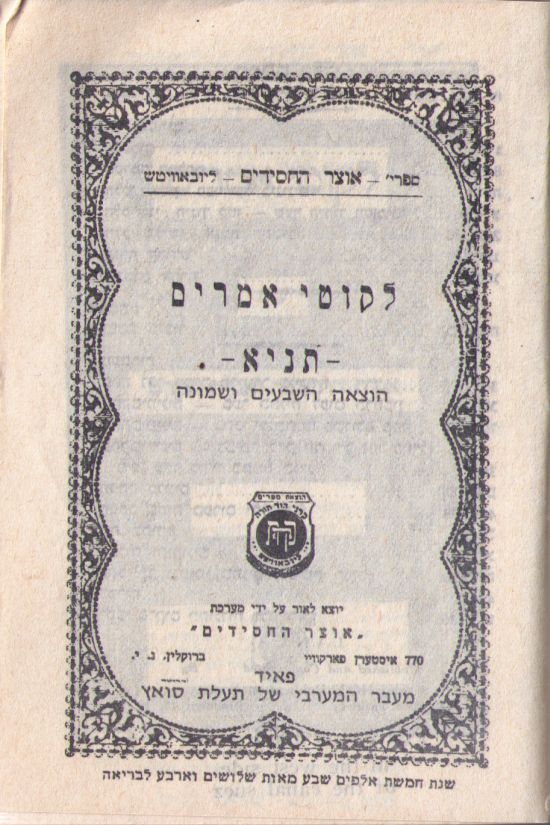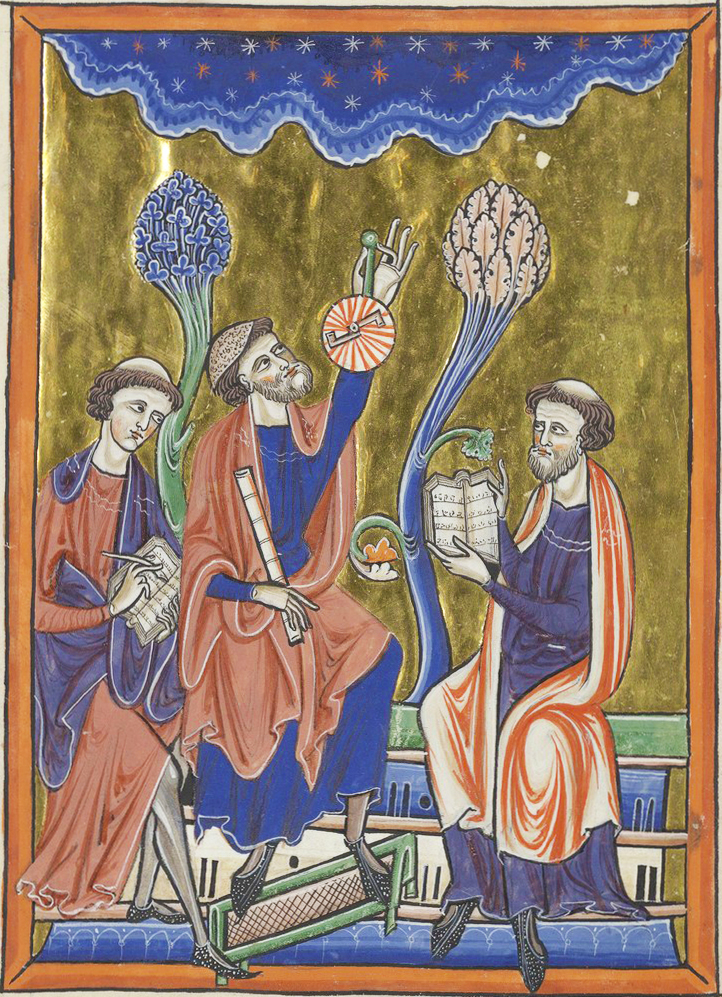|
Mitzvah
In its primary meaning, the Hebrew language, Hebrew word (; , ''mīṣvā'' , plural ''mīṣvōt'' ; "commandment") refers to a commandment Divine law, from God to be performed as a religious duty. Jewish law () in large part consists of discussion of these commandments. According to religious tradition, there are 613 commandments, 613 such commandments. In its secondary meaning, the word ''mitzvah'' refers to a deed performed in order to fulfill such a commandment. As such, the term ''mitzvah'' has also come to express an individual act of human kindness in keeping with the law. The expression includes a sense of heartfelt sentiment beyond mere legal duty, as "you shall love your neighbor as yourself" (Leviticus 19:18). For some ''mitzvot'', the purpose is specified in the Torah; though, the opinions of the Talmudic rabbis are divided between those who seek the Teleology, purpose of the ''mitzvot'' and those who do not question them. The former believe that if people were to ... [...More Info...] [...Related Items...] OR: [Wikipedia] [Google] [Baidu] |
Jewish Prayer
Jewish prayer (, ; plural ; , plural ; Yinglish: davening from Yiddish 'pray') is the prayer recitation that forms part of the observance of Rabbinic Judaism. These prayers, often with instructions and commentary, are found in the '' Siddur'', the traditional Jewish prayer book. Prayer, as a "service of the heart," is in principle a Torah-based commandment. It is mandatory for Jewish women and men. However, the rabbinic requirement to recite a specific prayer text does differentiate between men and women: Jewish men are obligated to recite three prayers each day within specific time ranges ('' zmanim''), while, according to many approaches, women are only required to pray once or twice a day, and may not be required to recite a specific text. Traditionally, three prayer services are recited daily: * Morning prayer: ''Shacharit'' or ''Shaharit'' (, "of the dawn") * Afternoon prayer: '' Mincha'' or ''Minha'' (), named for the flour offering that accompanied sacrific ... [...More Info...] [...Related Items...] OR: [Wikipedia] [Google] [Baidu] |
Mezuzah
A ''mezuzah'' ( "doorpost"; plural: ''mezuzot'') is a piece of parchment inscribed with specific Hebrew language, Hebrew verses from the Torah, which Jews affix in a small case to the doorposts of their homes. These verses are the Biblical passages in which the use of a mezuzah is commanded ( and ); they also form part of the Shema Yisrael, Shema prayer. According to Halakha, traditional Jewish law, a ''mezuzah'' must be placed on every Post and lintel, post-and-lintel entrance to a residence, courtyard, or city. Since the time of Meir of Rothenburg (), religious Jews have increasingly also placed ''mezuzot'' on the entrances to non-residential buildings such as synagogues and offices, and on each internal doorway of the home or building, with the exception of bathrooms (where the Names of God, name of God is forbidden) and small closets. The ''klaf'' is prepared by a qualified scribe ("''sofer stam'') who has undergone training, both in studying the relevant religious laws, ... [...More Info...] [...Related Items...] OR: [Wikipedia] [Google] [Baidu] |
Tefillin
Tefillin (Modern Hebrew language, Israeli Hebrew: / ; Ashkenazim, Ashkenazic pronunciation: ; Modern Israeli Hebrew, Modern Hebrew pronunciation: ), or phylacteries, are a set of small black leather boxes with leather straps containing scrolls of parchment inscribed with verses from the Torah. Tefillin are worn by male adult Jews during weekday and Sunday morning prayers. In Orthodox Judaism, Orthodox and traditional communities, they are worn solely by men, while some Reform Judaism, Reform and Conservative Judaism, Conservative (Masorti) communities allow them to be worn by Jewish adults regardless of gender. In Jewish law (halacha), women are exempt from most time-dependent positive commandments, which include tefillin, and unlike other time-dependent positive commandments, most halachic authorities prohibit them from fulfilling this commandment. Although "tefillin" is technically the plural form (the singular being "tefillah"), it is often used as a singular as well. The a ... [...More Info...] [...Related Items...] OR: [Wikipedia] [Google] [Baidu] |
Birkat Hamazon
Birkat Hamazon ( "The Blessing of the Food"), known in English as the Grace After Meals ( "to bless", Yinglish: Bentsching), is a set of Hebrew language, Hebrew blessings that Halakha, Jewish law prescribes following a meal that includes at least a kezayit (olive-sized) piece of bread. It is understood as a mitzvah (Biblical commandment) based on Book of Deuteronomy, Deuteronomy 8:10. Birkat Hamazon is recited after a meal containing bread or similar foods that is made from the Chametz#The five grains, five grains, with the exception of bread that comes as a dessert (') and food that does not possess the form or appearance of bread ('), in which case a blessing that summarizes the first three blessings (') is recited instead. It is a matter of rabbinic dispute whether ''Birkat Hamazon'' must be said after eating certain other bread-like foods such as pizza. Except in teaching situations, ''Birkat Hamazon'' is typically read individually after ordinary meals. The blessing can ... [...More Info...] [...Related Items...] OR: [Wikipedia] [Google] [Baidu] |
Takkanah
A ''takkanah'' (, pl. ''takkanot'', 'improvement') is a major legislative enactment within ''halakha'', the normative system of Judaism's laws. A ''takkanah'' is an enactment that revises an ordinance that no longer satisfies the requirements of the times or circumstances or which, being deduced from a biblical passage, may be regarded as new. A ''takkanah'' is enacted by a rabbinical decree or ordinance to improve and preserve religious life. It is, therefore, the antithesis of the ''gezerah'' (). The term is applied also to the institution provided for in the enactment. ''Takkanot'' were enacted even in the time of the Second Temple, those of unknown origin being ascribed to earlier leaders, and they have been promulgated at all subsequent periods of Jewish history. Introduction Classical Jewish law granted rabbis wide legislative powers. There are two powerful legal tools within the ''Halakhic'' system: * ''Gezeirah'': "preventive legislation" of the classical rabbis, intended ... [...More Info...] [...Related Items...] OR: [Wikipedia] [Google] [Baidu] |
List Of Jewish Prayers And Blessings
Listed below are some Hebrew language prayers and berakhot (blessings) that are part of Judaism that are recited by many Jews. Most prayers and blessings can be found in the Siddur, or prayer book. This article addresses Jewish liturgical blessings, which generally begin with the formula: Transliteration: ' Translation: "Blessed are You, our God, King of the universe..." Pronunciation In the transliterations below, ' is used to refer to the sh'vah, which is similar/equivalent to ə; a mid-word aleph, a glottal stop; and a mid-word ayin, a voiced pharyngeal fricative ʕ similar/equivalent to . Whenever ''`'' is used, it refers to ayin whether word-initial, medial, or final. 'H/h' are used to represent both he, an English h sound as in "hat"; and ḥet, a voiceless pharyngeal fricative ħ equivalent to Arabic . Whenever 'ḥ' is used, it refers to ḥet. In all other regards, transliterations are according to Sephardi Hebrew. Daily prayers Waking up Pesuke dezim ... [...More Info...] [...Related Items...] OR: [Wikipedia] [Google] [Baidu] |
Rabbi
A rabbi (; ) is a spiritual leader or religious teacher in Judaism. One becomes a rabbi by being ordained by another rabbi—known as ''semikha''—following a course of study of Jewish history and texts such as the Talmud. The basic form of the rabbi developed in the Pharisees, Pharisaic (167 BCE–73 CE) and Talmudic (70–640 CE) eras, when learned teachers assembled to codify Judaism's written and oral laws. The title "rabbi" was first used in the first century CE. In more recent centuries, the duties of a rabbi became increasingly influenced by the duties of the Clergy, Protestant Christian minister, hence the title "pulpit rabbis." Further, in 19th-century Germany and the United States, rabbinic activities such as sermons, pastoral counseling, and representing the community to the outside all increased in importance. Within the various Jewish denominations, there are different requirements for rabbinic ordination and differences in opinion regarding who is recognized as a ... [...More Info...] [...Related Items...] OR: [Wikipedia] [Google] [Baidu] |
613 Commandments
According to Jewish tradition, the Torah contains 613 commandments (). Although the number 613 is mentioned in the Talmud, its real significance increased in later medieval rabbinic literature, including many works listing or arranged by the . The most famous of these was an enumeration of the 613 commandments by Maimonides. While the total number of commandments is 613, no individual can perform all of them. Many can only be observed at the Temple in Jerusalem, which no longer stands. According to one standard reckoning, there are 77 positive and 194 negative commandments that can be observed today, of which there are 26 commandments that apply only within the Land of Israel. In addition, some commandments only apply to certain categories of Jews: some are only observed by '' kohanim'', and others only by men or by women. Symbolism of 613 Rav Hamnuna sourced the count of 613 in the verse ("Moses commanded us the Torah..."). The Talmud notes that the Hebrew numerical value ... [...More Info...] [...Related Items...] OR: [Wikipedia] [Google] [Baidu] |
Second Temple Period
The Second Temple period or post-exilic period in Jewish history denotes the approximately 600 years (516 BCE – 70 CE) during which the Second Temple stood in the city of Jerusalem. It began with the return to Zion and subsequent reconstruction of the Temple in Jerusalem, and ended with the First Jewish–Roman War and the Roman siege of Jerusalem. In 587/586 BCE, the Neo-Babylonian Empire conquered the Kingdom of Judah; the Judeans lost their independence upon the Babylonian siege of Jerusalem, during which the First Temple was destroyed. After the Babylonians annexed Judah as a province, part of the subjugated populace was exiled to Babylon. This exilic period lasted for nearly five decades, ending after the Neo-Babylonian Empire itself was conquered by the Achaemenid Persian Empire, which annexed Babylonian territorial possessions after the fall of Babylon. Soon after the conquest, Persian king Cyrus the Great issued a proclamation known as the Edict of Cyrus, encoura ... [...More Info...] [...Related Items...] OR: [Wikipedia] [Google] [Baidu] |
Halakha
''Halakha'' ( ; , ), also Romanization of Hebrew, transliterated as ''halacha'', ''halakhah'', and ''halocho'' ( ), is the collective body of Judaism, Jewish religious laws that are derived from the Torah, Written and Oral Torah. ''Halakha'' is based on biblical commandments (''Mitzvah, mitzvot''), subsequent Talmudic and Mitzvah#Rabbinic mitzvot, rabbinic laws, and the customs and traditions which were compiled in the many books such as the ''Shulchan Aruch'' or ''Mishneh Torah''. ''Halakha'' is often translated as "Jewish law", although a more literal translation might be "the way to behave" or "the way of walking". The word is derived from the Semitic root, root, which means "to behave" (also "to go" or "to walk"). ''Halakha'' not only guides religious practices and beliefs; it also guides numerous aspects of day-to-day life. Historically, widespread observance of the laws of the Torah is first in evidence beginning in the second century BCE, and some say that the first evide ... [...More Info...] [...Related Items...] OR: [Wikipedia] [Google] [Baidu] |
Tanya (Judaism)
The ''Tanya'' () is an early work of Hasidic philosophy, by Rabbi Shneur Zalman of Liadi, the founder of Chabad Hasidism, first published in 1796. Its formal title is ''Likkutei Amarim'' (, Hebrew, "collection of statements") but is more commonly known by its first word (''tanya''), which in Aramaic means "it has been taught". Zalman is referring to a baraita in "Niddah" chapter 3 in the word’s first usage. The ''Tanya'' is composed of five sections that define Hasidic mystical psychology and theology as a handbook for daily spiritual life in Jewish observance. The ''Tanya'' is the main work of Chabad philosophy and the Chabad approach to Hasidic mysticism, as it defines its general interpretation and method. The subsequent extensive library of the Chabad school, authored by successive leaders, builds upon the approach of the ''Tanya''. Chabad differed from mainstream Hasidism by its philosophical investigation and intellectual analysis of Hasidic Torah exegesis. Thi ... [...More Info...] [...Related Items...] OR: [Wikipedia] [Google] [Baidu] |
Rishonim
''Rishonim'' (; ; sing. , ''Rishon'') were the leading rabbis and ''posek, poskim'' who lived approximately during the 11th to 15th centuries, in the era before the writing of the ''Shulchan Aruch'' (, "Set Table", a common printed code of Jewish law, 1563 CE) and following the ''Geonim'' (589–1038 CE). Rabbinic scholars subsequent to the ''Shulchan Aruch'' are generally known as ''acharonim'' ("the latter ones"). The distinction between the and the is meaningful historically; in ''halakha'' (Jewish law) the distinction is less important. According to a widely held view in Orthodox Judaism, the Acharonim generally cannot dispute the rulings of rabbis of previous eras unless they find support from other rabbis in previous eras. On the other hand, this view is not formally a part of ''halakha'' itself, and according to some rabbis is a violation of the halakhic system.See Kesef Mishna (Maamrim 2:2), Kovetz Igros Chazon Ish (2:26) In ''The Principles of Jewish Law'', Orthodox ra ... [...More Info...] [...Related Items...] OR: [Wikipedia] [Google] [Baidu] |





